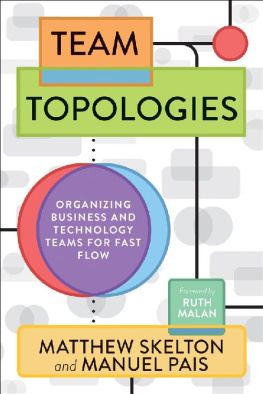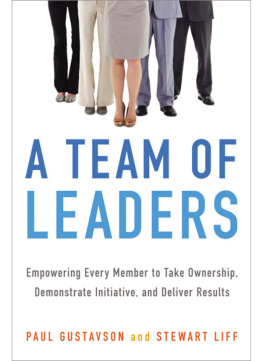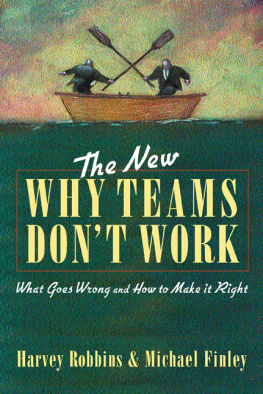
Praise for
TEAM TOPOLOGIES
Team Topologies provides fresh insights on how to anticipate and adapt to market and technology changes. To survive, enterprises need to unlearn existing command and control structures and instead move authority to leaders with the best information to take action and respond. This book will help executives and business leaders focus on the key strategies of high-performance teams to effectively address the needs of today and the evolving landscape of tomorrow.
Barry OReilly , Founder of ExecCamp, Business Advisor, and Author of Unlearn and Lean Enterprise
There is nothing more fundamental to management than how you structure your organization and what behaviors you encourage. Despite this, few have attempted to catalog and analyze the organizational design patterns of IT organizations going through digital, DevOps, and SRE transformations. Skelton and Pais have not only accepted this bold challenge, but theyve also hit the mark by creating an indispensable and unique resource.
Damon Edwards , Co-Founder of Rundeck
Team Topologies provides a much-needed framework for evaluating and optimizing team organization for increased flow. Teams that have the right size, the right boundaries, and the right level of communication are poised to deliver value to the company and satisfaction to the team members. Team Topologies combines a methodical approach with real-world case studies to unlock the full potential of your tech teams.
Greg Burrell , Senior Reliability Engineer at Netflix
Team Topologies by Matthew Skelton and Manuel Pais is unique. It is going to have a big influence across tech companies. We need a structured and methodical approach to shaping teams for continuous delivery instead of copying a few Spotify rituals. This is the book.
Nick Tune, API Platform Lead, Navico
At Cond Nast International, [the DevOps Topologies] was crucial in understanding our current DevOps state and in defining the vision for our aspirational DevOps operating model. We were able to navigate round the pitfalls and organizational anti-patterns as excellently described in the models.... I am extremely pleased that Matthew and Manuel are growing on the success of the DevOps Topologies and turning their further learnings into the far-reaching book Team Topologies for organization design.
Crystal Hirschorn , VP of Engineering, Global Strategy and Operations at Cond Nast
The high-performing team is the core generator of value in the modern digital economy. But cultivating and scaling an adaptive ecosystem of such teams is a too-often elusive goal. In Team Topologies , Skelton and Pais provide innovative tools and concepts for structuring the next generation digital operating model. Recommended for CIOs, enterprise architects, and digital product strategists worldwide.
Charles Betz , Principal Analyst, Forrester Research
Matthew Skelton and Manuel Pais say Team Topologies is meant to be a functional bookand it is. Its well constructed and sign-posted, based in sound thinking, and challenges readers to assume, like them, that an organization is a sociotechnical system or ecosystem. From this assumption comes practical suggestions, no prescriptions, and skill in explaining an approach that provides for effective tech/human organization design. For anyone in the tech/organization design field, [ Team Topologies is] well worth reading.
Dr. Naomi Stanford , Organization Design Practitioner, Teacher, and Author
I have found Matthew and Manuels work on patterns and language to be incredibly valuable in both shaping strategies to transform team contexts over time across our organization, as well as in helping business and technology leadership connect with the topics of flow and continuous delivery.
Richard James , Head of Digital Technology & Engineering at Nationwide
Teams are the fundamental building block of organizations, how those teams work and the system they operate in are the difference between average and high performance. This book is a deep well of information for how you can optimize your organizations system for your current context.
Jeremy Brown , Director, Red Hat Open Innovation Labs EMEA
DevOps is great, but how do real-world organizations actually structure themselves to do it? You cant just put everyone on a single, silo-less team, all sitting together in one giant open-plan office and going out to lunch or playing foosball together. Team Topologies provides a practical set of templates for addressing the key DevOps question that other guides leave as an exercise for the student.
Jeff Sussna , Founder & CEO, Sussna Associates, and Author of Designing Delivery
If youre looking for an analysis of the challenges with the traditional ways of working, and also some practical guidance on mitigation strategies (e.g., new interaction modes, reducing cognitive load, and creating appropriate Team APIs), then this is the book for you!
Daniel Bryant , Technical Consultant/Advisor and News Manager at InfoQ
Team Topologies makes for a fascinating read as it explores the symbiotic relationship between teams and the IT architecture they support. It goes beyond the common approach of static org charts or self-organizing chaos and shows how to evolve the people system and IT system together.
Mirco Hering , Global DevOps Lead Accenture and Author of DevOps for the Modern Enterprise
TEAM
TOPOLOGIES
ORGANIZING BUSINESS AND TECHNOLOGY TEAMS FOR FAST FLOW
MATTHEW SKELTON and MANUEL PAIS
Foreword by Ruth Malan


25 NW 23rd Pl, Suite 6314
Portland, OR 97210
Copyright 2019 by Matthew Skelton and Manuel Pais
For information about permission to reproduce selections from this book, write to Permissions, IT Revolution Press, LLC, 25 NW 23rd Pl, Suite 6314, Portland, OR 97210.
Cover and book design by Devon Smith
Library of Congress Catalog-in-Publication Data
Available upon request
ISBN: 978-1942788-812
eBook ISBN: 978-1942788-829
Kindle ISBN: 978-1942788-836
Web PDF ISBN: 978-1942788-843
For information about special discounts for bulk purchases, or for information on booking authors for an event, please visit our website atITRevolution.com.
TEAM TOPOLOGIES

To my wife, Suzy Beckfor all your support and inspiration.
To Katie, my life partner and family strongholdthanks for your tireless love and support.
To Dan and Ben, daily sources of warmthhopefully this book can help you understand what Daddy does for a living.
CONTENTS
FIGURES & TABLES
FIGURES
TABLES
CASE STUDIES &
INDUSTRY EXAMPLES
Chapter 1
Chapter 2
Chapter 3
Chapter 4
Chapter 5
Chapter 6
Chapter 7
Chapter 8
FOREWORD
K eeping our systems small and simple is a worthy goal, yet it is also one that most successful systems defy. Lehmans laws of software evolution, and, in particular, continuing growth, captures the evolutionary pressure to add capabilities as systems are used and new demands or opportunities are perceived. Being able to cope with, and even harness, this increasing complexity raises the importance of dual design arenas: the design of systems and the design of the organization that creates and evolves systems. We have a considerable body of work focused on the former; that is, on systems and software design and architecture, including an ever growing number of books on domain driven design and software architecture. Team Topologies addresses the design of the software development organization, with Conways law in view.
Next page












